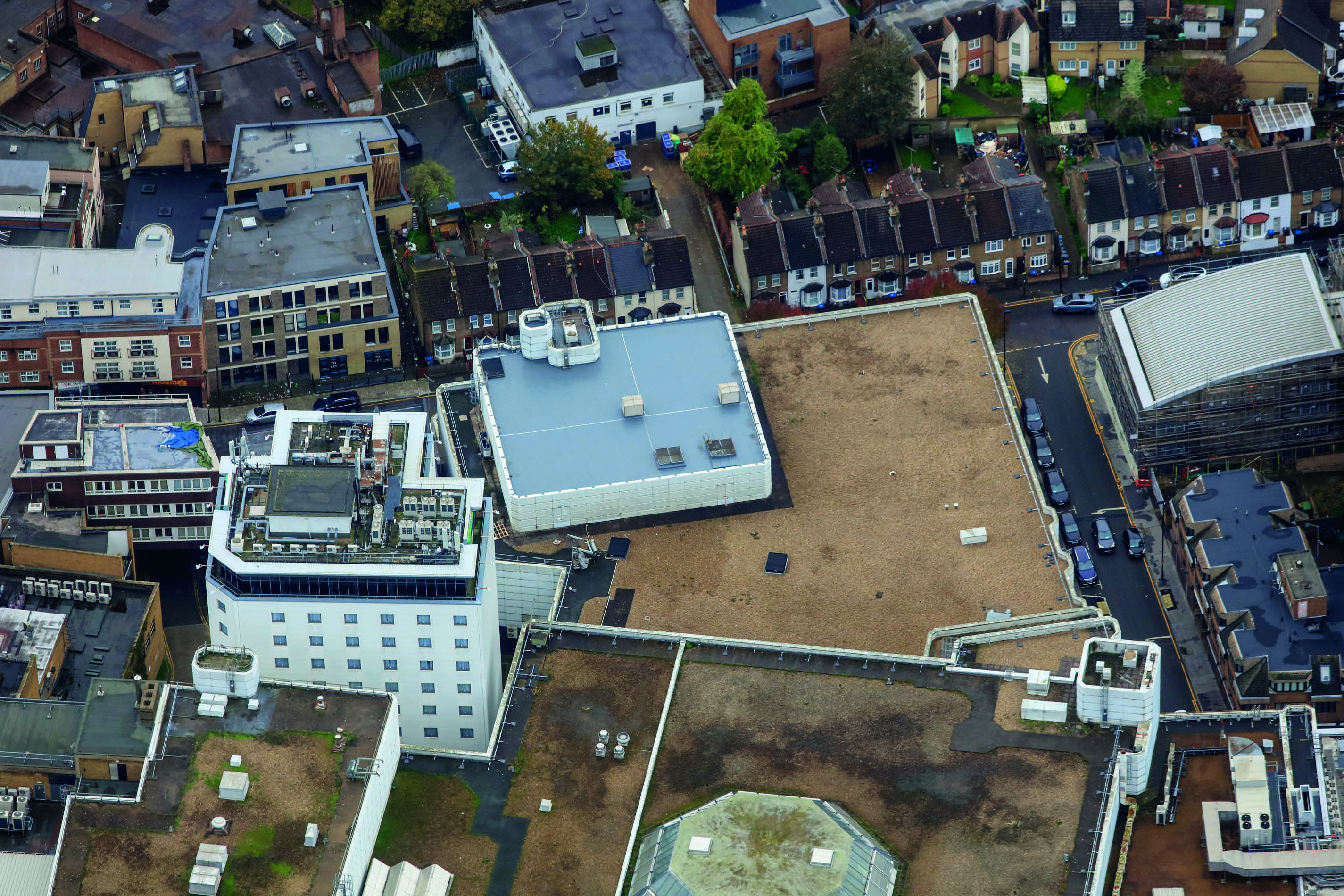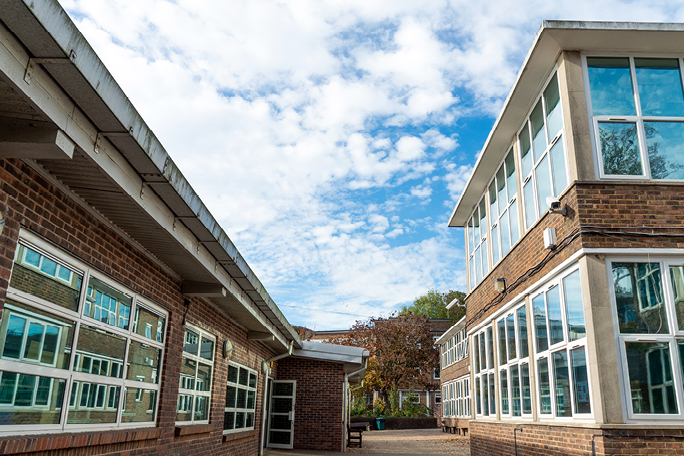RAAC: Risks and Remediation
What is RAAC?
Reinforced Autoclaved Aerated Concrete (RAAC) is a ‘bubbly’ lightweight form of reinforced concrete that is manufactured with extremely fine aggregates meaning its structurally and physically different from traditional higher-density concretes.
Although categorised as concrete, RAAC has a cellular-type construction that is formed by a chemical reaction during the curing process when foaming gases are emitted creating a honeycomb-like structure. The resulting precast planks are then heat and pressure-treated (Autoclaved) to provide additional strength. This manufacturing process was cost-effective and created an incredibly lightweight building material that can be thermally efficient and fire resistant but has significantly lower structural capacity than most structural grade concretes making it susceptible to fracture or complete failure over time.
Where it’s found?
Often found in public sector buildings, especially schools and colleges between the 1950s and 1990s.
RAAC was specified in multiple building applications such as flat or pitched roof structural decking, supporting floor and wall constructions, and eaves designs.
What are the risks?
In September 2022, the Office of Government Property sent a ‘Safety Briefing Notice’ to all Property Leaders, confirming the dangers of RAAC, stating that ‘RAAC is now life-expired and liable to collapse’.
The problems and associated risks;
- Moisture and water absorption: RAAC has a high porosity and can absorb moisture, which can cause problems such as mould growth, deterioration, and reduced insulation properties.
- Structural integrity: It’s a lightweight material, and its structural integrity can be affected by factors such as moisture, exposure to high temperatures, and impact. This means
- Durability: The material is prone to cracking and surface damage if not correctly installed
- Fire resistance: While RAAC is generally considered to be fire-resistant, its fire resistance properties can vary depending on the thickness of the material, the presence of reinforcement, and other factors.
For a long time, it has been considered that visual deterioration can be seen before RAAC failures. However, in more recent experience, roofs have failed with no warning signs. This suggests that the problems and risks associated with RAAC could be more serious than once thought. Considerably so when many building owners are not aware that it is present in their building.
“Tens of 1000s of these structural panels exist across a broad cross-section of buildings, many constructed in the 1960s and 70s, and many are showing signs of wear and tear and deterioration. The vast majority form the roof of the structure, usually flat, and hence are difficult to access, survey, maintain and replace.” - Professor Goodier
How to identify it?
RAAC can be identified by its characteristic appearance and properties. It has a porous structure with a cellular or honeycomb-like appearance, which is visible when the material is cut or broken. The surface of RAAC is often rough or textured, and it may have visible holes or pores. RAAC is also applied in precast planks that typically have chamfered edges making it easy to identify.
To confirm whether a building material is RAAC, follow the flowchart created by the Department for Education (DFE). Though, we recommend you consult with a professional or a manufacturer to ensure accurate identification immediately.
The warning signs
If you are concerned about the performance or safety of a RAAC structure, there are several warning signs that you should look out for:
- Cracking: Cracks in the RAAC may indicate that the structure is under stress, or that there has been damage to the material.
- Water damage: Moisture penetration or water damage can weaken the RAAC and reduce its performance. Signs of water damage may include discoloration, staining, or softness in the material.
- Deterioration: Over time, RAAC may deteriorate due to exposure to weather or other environmental factors. Signs of deterioration may include flaking, spalling, or crumbling.
- Corrosion: Reinforced RAAC structures may be susceptible to corrosion of the steel reinforcement over time, which can weaken the structure and cause damage.
- Structural movement: If a RAAC structure is experiencing significant movement, this may indicate that there are underlying issues with the foundation or support structure.
If you notice any of these warning signs, it is important to consult with a qualified professional for an assessment and recommendations for remediation measures. Proper maintenance and monitoring of RAAC structures can help to ensure their long-term performance and safety.
How to remediate?
Suspected fragile roof decks must be assessed in accordance with HSG 33 health and safety guidance publication. Further details can be found at https://www.hse.gov.uk/pubns/books/hsg33.htm.
Many structural deck types can be repaired when cracks or other deterioration is found without the need to replace the whole supporting structure. However, due to the nature of RAAC, with potentially no warning signs before failures and buildings exceeding the structural deck’s lifespan, the safest solution would be to fully remove it.
How we can help?
At Tremco, for all roofs, a free no-obligation roof survey is conducted to determine and assess the build-up and what condition the roof is in inclusive of the deck (stage 2 of the DFE flow chart). If RAAC is potentially present, a structural engineer should also be appointed to confirm this, and a holistic roof condition report created. This report, will identify any properties constructed using RAAC and summarise the potential risks.
If the findings demonstrate damage, in any capacity, Tremco will strongly advise against retaining or working on existing RAAC decks due to safety concerns and exceeded typical lifespan of around 30 years. Instead, it’s recommended to completely remove and replace the RAAC deck with a suitable timber or profile metal deck solution. When it comes to RAAC, even if no damage is found, it is still advisable to completely remove the fragile deck eliminating any future risk.
Once removed, a new Tremco roof system can be incorporated, with thermal efficiency upgrades and compliance with Broof(t4) classification in line with fire safety.
Tremco manages each aspect of roof refurbishment from initial assessment/survey, through to design, supply, install and inspections throughout.
Tremco Trusted Partners are available with extensive expertise and training to ensure that the removal and replacement work is completed safely and to the highest professional standard. Additionally, the company offers a Single-Point Warranty of up to 20 or 25 years to provide further assurance to our clients.











